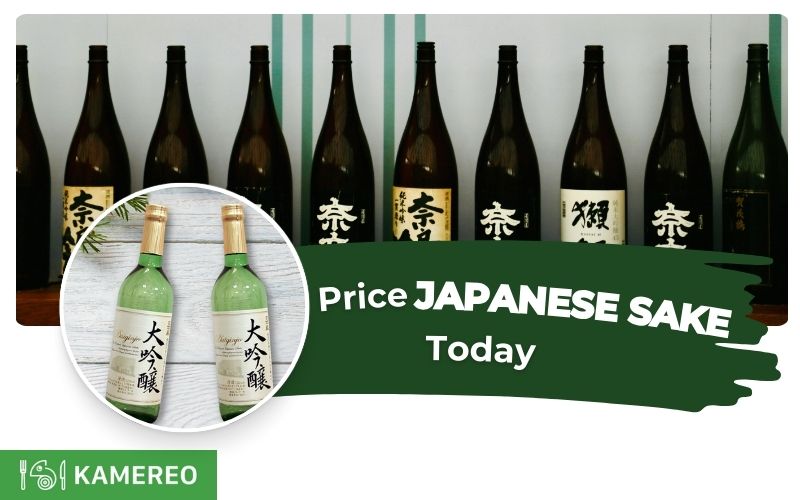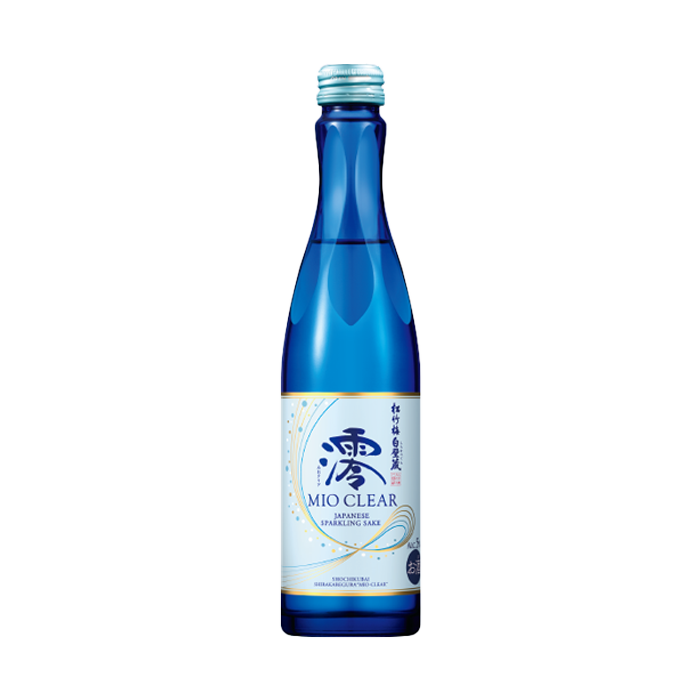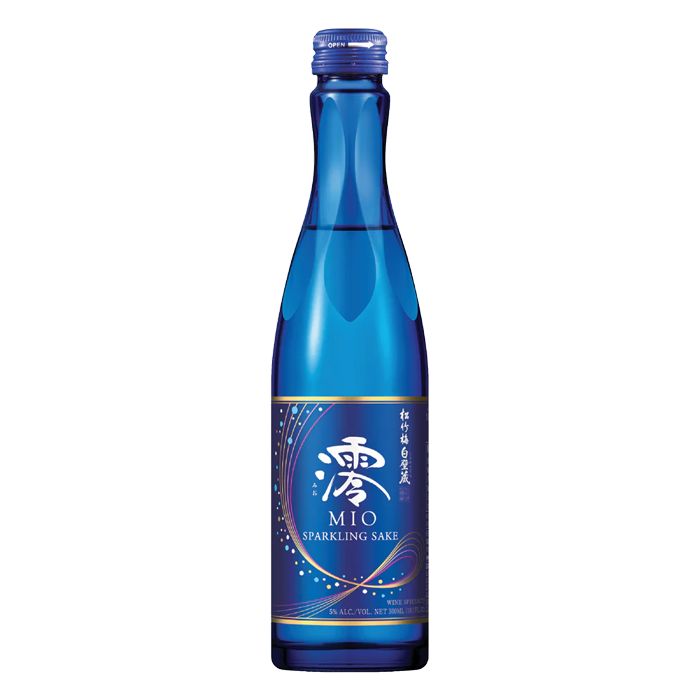Japanese sake prices today Sunday, August 3, 2025 vary across different ranges, depending on the type of sake, production method, and distribution channel. From common bottles to premium varieties like Daiginjo, each sake offers a unique price and experience. If you’re looking to import products for your restaurant or simply love Japanese alcohol culture, don’t miss the latest sake price list here!
📖 This article belongs to the MARKET PRICE NEWS series
This is a series of articles providing detailed and updated information on market prices for various goods.
Japanese Sake Prices
Currently, Japanese sake prices in the Vietnamese market range from approximately 130,000 to 1,500,000 VND per bottle, depending on the product line such as Junmai, Honjozo, or Daiginjo. Prices may vary based on the purity of ingredients, production process, volume, and brand.
To help you easily keep track, below is a detailed summary of popular sake types with reference prices:
| Type of Japanese Sake | Price (VND) | Unit |
|---|---|---|
| Junmai Sake | 480,000 – 690,000 | Bottle |
| Honjozo Sake | 240,000 – 940,000 | Bottle |
| Daiginjo Sake | 640,000 – 1,500,000 | Bottle |
| Nama Sake | 130,000 – 800,000 | Bottle |
| Nigori Sake | 250,000 – 500,000 | Bottle |
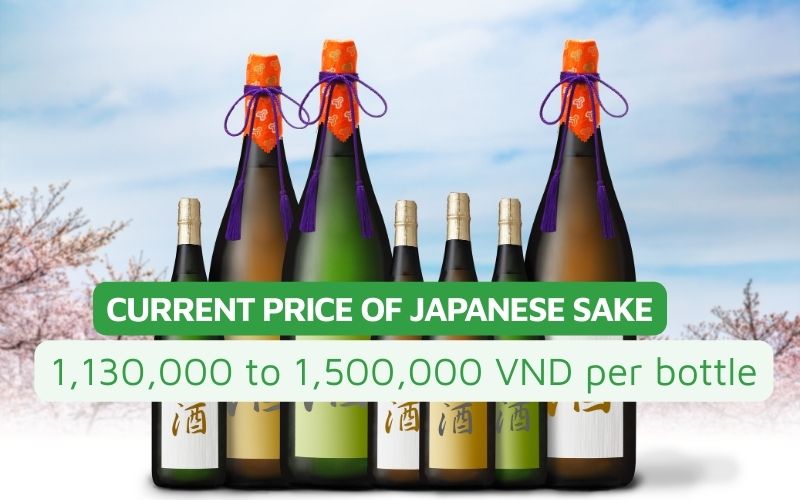
Please note: The selling price of Japanese sake on the market may vary depending on various factors including supply and demand, point of sale, time of purchase, etc.
Kamereo – A Supplier of Authentic Japanese Sake at Great Prices
Kamereo is a supplier of authentic Japanese sake at competitive prices and a strategic partner of Gyomu Japan, bringing quality imported Japanese sake products to the F&B industry in Vietnam. With a focus on simplifying the food supply chain through technology, Kamereo helps businesses optimize their procurement processes, saving time and operational costs.
Some Japanese sake products currently available at Kamereo:
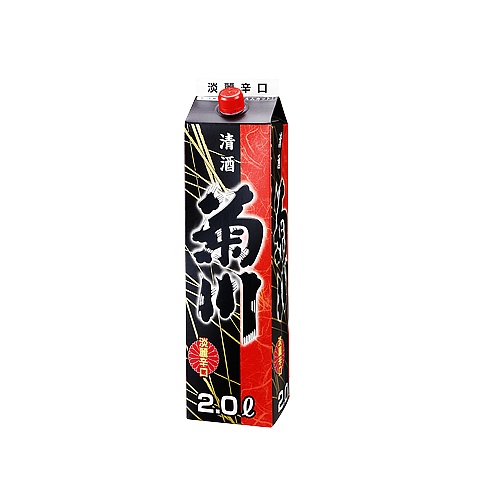
Kikukawa Sake (14%~15% ABV) 2L / 清酒 菊川
330,000đ/BOX
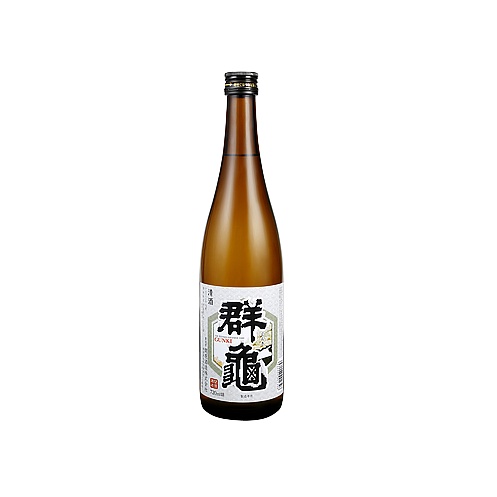
Gunki Sake (15% ABV) 720ml / 群亀
200,000đ/BOTTLE
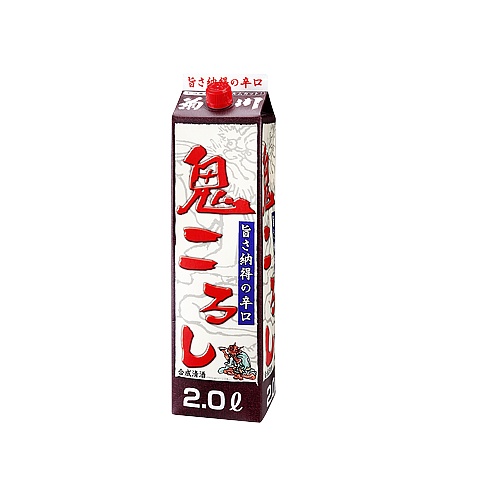
Onikoroshi Sake (14%~15% ABV) 2L / 菊川の鬼ころし
250,000đ/BOX
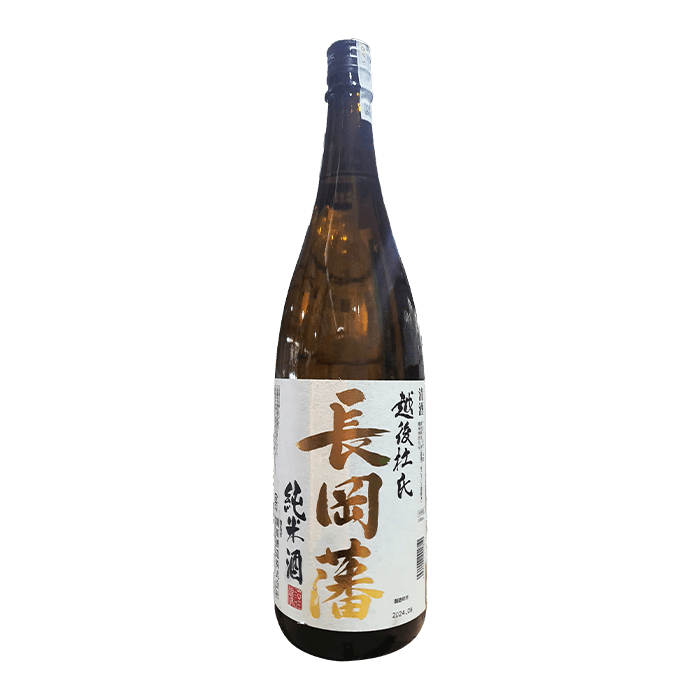
Nagaokahan Sake (14% ABV) 1.8L / 純米酒 越後杜氏 長岡藩
450,000đ/BOTTLE
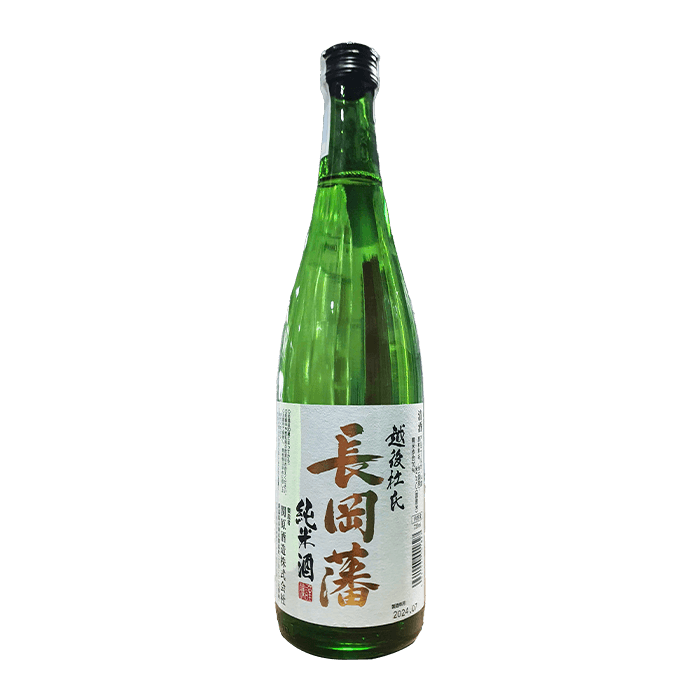
Nagaokahan Sake (14% ABV) 720ml / 純米酒 越後杜氏 長岡藩
235,000đ/BOTTLE

Namachozo Shu Masukame Sake (14% ABV) 720ml / 升亀 生貯蔵酒
200,000đ/BOTTLE
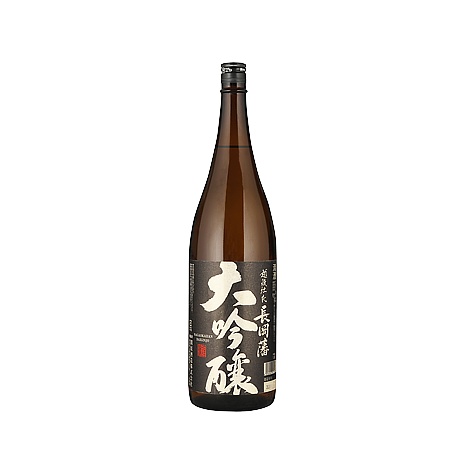
Nagaokahan Daiginjo Sake (15% ABV) 1.8L / 大吟醸酒 越後杜氏 長岡藩
630,000đ/BOTTLE
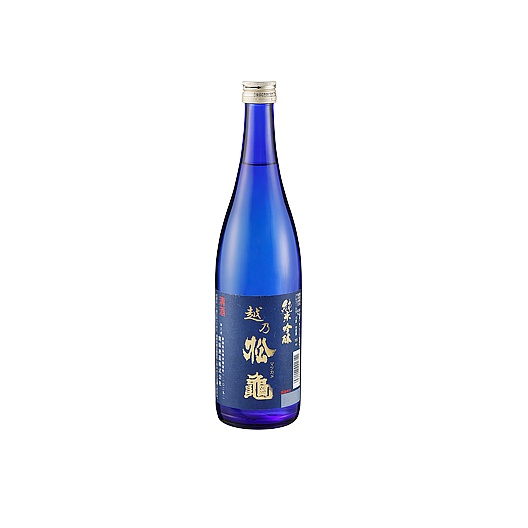
Junmai Ginjo Matsukame Sake (15% ABV) 720ml / 純米吟醸酒 越乃松亀
310,000đ/BOTTLE
<button CTA>
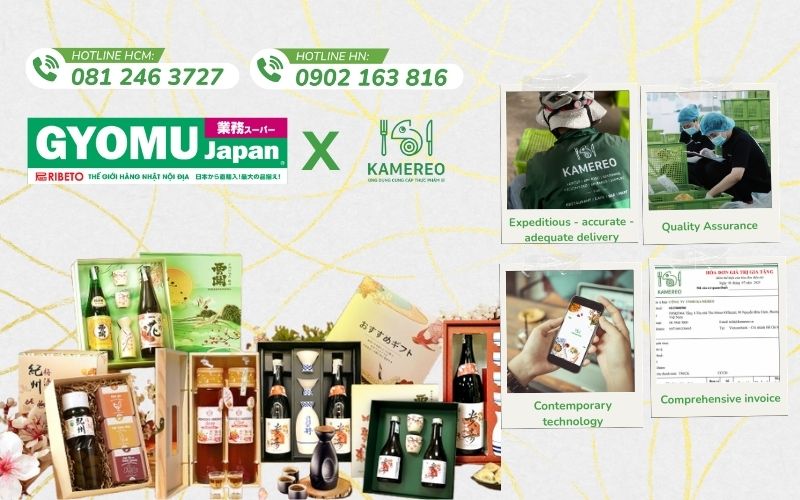
Beyond its excellent sake products, Kamereo offers over 3,000 diverse items, from fresh and frozen foods, beverage ingredients, to kitchen utensils. All essential restaurant needs are comprehensively met on a single platform, providing convenience and operational synchronization.
To ensure the quality of goods delivered to customers, Kamereo has invested in a modern storage system with separate chilled and frozen rooms, combined with a strict 3-layer quality inspection process. As a result, all products meet the highest food safety and hygiene standards, suitable for the stringent requirements of the F&B industry.
Unlike traditional suppliers, Kamereo provides smart electronic invoices, allowing businesses to easily manage and receive VAT invoices immediately after payment. Additionally, the service of ordering until 12 AM and delivery before 6 AM the next morning gives customers operational flexibility and ensures they are always ready to serve diners every day.
Characteristics of Japanese Sake Varieties
Japanese sake is classified based on the rice polishing ratio and whether distilled alcohol is added, with each type offering distinct flavor profiles and experiences. Here are the prominent characteristics of popular sake types you should know:
- Junmai: This is a traditional and pure sake, made only from rice, water, Koji mold, and contains no added alcohol or additives. Junmai-shu is known for its rich and robust flavor, often strongly showcasing the characteristics of rice, making it one of the most beloved types of sake.
- Honjozo: Similar to Junmai sake, Honjozo is also produced using a strict traditional brewing method but with the addition of a small amount of distilled alcohol. This addition gives the sake a lighter and more vibrant flavor, accompanied by a delicate aroma.
- Daiginjo: Considered the pinnacle of sake brewing art, Daiginjo has a rice polishing ratio of 50% or less. It undergoes a meticulous production process at low temperatures, resulting in a sake with refined flavors and is often reserved for special occasions or ceremonies.
In addition to the main types, there are also some unique sake styles that offer different tasting experiences:
- Nama Sake is bottled without pasteurization, preserving its fresh, lively flavor and original delicate aroma.
- Nigori Sake (also known as “cloudy sake”) is coarsely filtered, retaining some rice sediment in the final product, resulting in a creamy and distinctly sweet flavor.
- Aged Sake, also known as Koshu, undergoes an aging process that can last several years, creating a more complex and profound flavor, similar to aged wine.
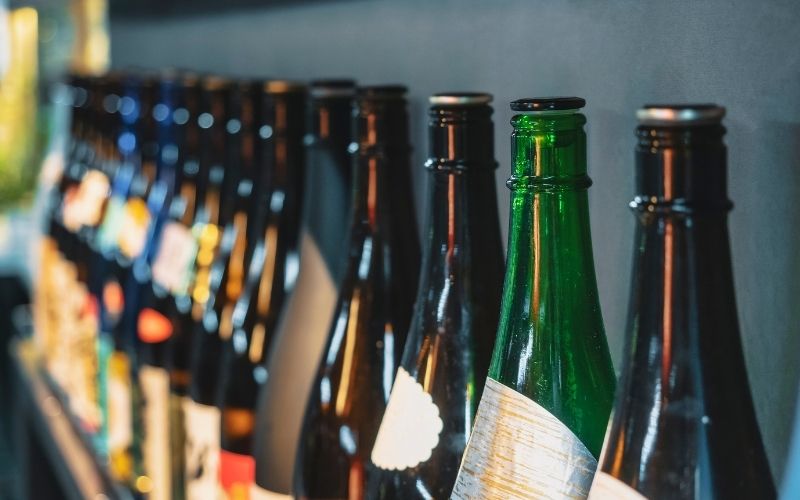
Frequently Asked Questions
What is the alcohol content of Japanese sake?
The alcohol content of Japanese sake typically ranges from 15% to 16% ABV, which is higher than regular beer or wine but lower than spirits like Soju or Whisky. According to Japanese alcohol tax law, sake varieties cannot exceed 22% ABV, so producers balance the alcohol level to maintain quality while optimizing tax rates.
What is sake made from?
Sake is produced from rice, water, yeast, and Koji mold, with rice being the primary ingredient and finely polished before brewing. The more thoroughly the rice is polished, the more delicate and light the sake’s flavor. Conversely, sake made with less polished rice retains more bran layers, resulting in a bolder, more complex, and richer flavor.
How should sake be drunk?
Sake can be enjoyed in various ways, depending on preference and the type of sake:
- Chilled: To maintain a refreshing flavor, sake should be chilled to 7 – 10°C. For Ginjo sake, chilling to 10 – 15°C will bring out the best aroma and taste.
- At room temperature (Hiya): Around 15 – 20°C is the ideal temperature to fully appreciate sake’s original flavor.
- Warm sake (Atsukan): This method involves warming sake to 40 – 60°C in a ceramic Tokkuri flask, suitable for use in colder seasons. Note: Never boil sake directly as it will spoil the flavor.
- Use appropriate glasses: Ochoko (small cups), Sakazuki (flat cups), Masu (square wooden cups), or glass tumblers – each offers a different experience.
Conclusion
Above are the latest updates on Japanese sake prices and useful information regarding how to enjoy and classify sake. Depending on your purpose and personal taste, you can choose the right sake. Don’t forget to visit frequently for the latest price updates and to discover more F&B Business Tips from Kamereo!
See more:



